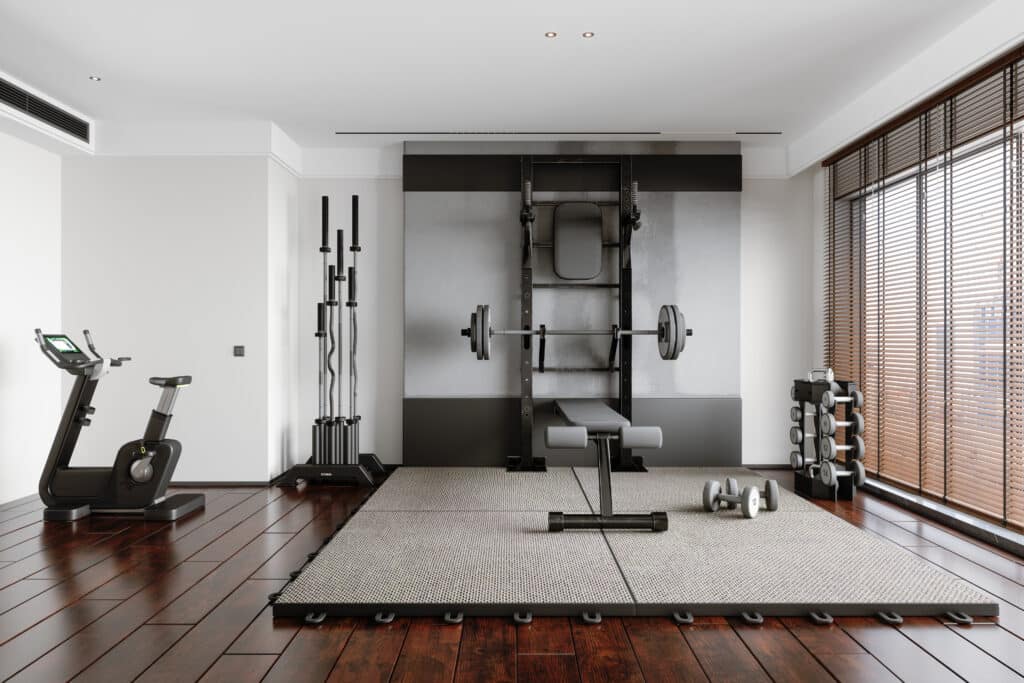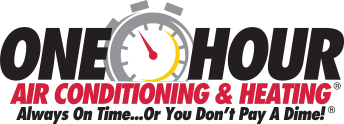
Efficient Heating and Air Solutions for Home Gyms
Do you know how crucial efficient heating and air solutions are for your home gym?
When it comes to creating the perfect workout environment, proper climate control is essential. An optimized HVAC (Heating, Ventilation, and Air Conditioning) system ensures comfort, maximizes performance, and protects equipment.
Home gyms have become increasingly popular, allowing fitness enthusiasts to exercise conveniently. However, without the right heating and air solutions, your home gym experience can suffer.
Extreme temperatures can make workouts uncomfortable and even discourage regular exercise. Moreover, improper ventilation can lead to poor air quality, which affects health and performance.
Why is HVAC so important in a home gym? The answer lies in maintaining a consistent and comfortable temperature. Whether it’s the scorching heat of summer or the chilly winter months, an effective HVAC system can keep your gym at an optimal temperature.
This not only enhances comfort but also helps in maintaining your gym equipment. Machines and electronics can be sensitive to temperature fluctuations, and a stable climate prolongs their lifespan.
There are numerous benefits to proper climate control in home gyms. Firstly, it improves air quality by filtering out pollutants, dust, and allergens. Good air quality is vital for breathing, especially during intense workouts. Secondly, it helps regulate humidity levels.
High humidity can cause discomfort and lead to mold growth, while low humidity can dry out the skin and respiratory passages. Balanced humidity levels ensure a healthy workout environment.

Importance of HVAC in Home Gyms
Have you ever wondered why HVAC systems are essential for home gyms? Maintaining a comfortable and healthy workout environment is crucial, and HVAC systems play a pivotal role in this.
Comfort
Extreme temperatures can deter you from exercising. In a poorly heated or cooled space, you might find it challenging to perform at your best. Proper heating ensures you stay warm during winter workouts, while efficient air conditioning keeps you cool in the summer. This balance allows for consistent exercise routines year-round.
Air quality
Good air circulation and filtration are essential in a home gym. Without proper ventilation, sweat and odors can accumulate, creating an unpleasant environment. Moreover, high concentrations of dust, allergens, and pollutants can negatively impact respiratory health. An efficient HVAC system filters these particles, ensuring you breathe clean air during your workouts.
Humidity control
Excess humidity can make the air feel heavy and sticky, leading to discomfort and even mold growth. Conversely, very low humidity can cause dry skin and respiratory irritation. A well-regulated HVAC system maintains ideal humidity levels, contributing to a more comfortable and healthier gym environment.
Safety
Overheated or poorly ventilated spaces can cause heat exhaustion or dehydration during intense workouts. Proper HVAC systems mitigate these risks by maintaining safe and consistent temperatures.
Efficiency and Energy Savings
Modern HVAC systems are designed to be energy-efficient, reducing the overall energy consumption of your home. Smart thermostats further enhance this by allowing precise control over temperature settings, ensuring the system runs optimally without unnecessary energy usage.
Assessing Your Home Gym’s HVAC Needs
How do you determine the best HVAC system for your home gym? Assessing your specific needs is crucial to ensure comfort and efficiency. Here’s how you can evaluate what your home gym requires in terms of heating and air conditioning.
Room size and layout are primary considerations
The size of your home gym significantly impacts the type and capacity of the heating and air conditioning system you need. A small, enclosed space may only require a compact unit, while a larger area might need a more robust system. Measure the square footage of your gym to determine the appropriate system size. Additionally, consider the room’s layout. If your gym has high ceilings or an open floor plan, you might need a system that can effectively circulate air throughout the space.
Insulation and ventilation are equally important.
Proper insulation helps maintain a consistent temperature, reducing the load on your heating and air conditioning system. Check the insulation in your walls, ceiling, and floors. Good insulation not only enhances comfort but also improves energy efficiency.
Ventilation, on the other hand, ensures fresh air circulation. Ensure there are adequate vents or windows to allow for proper airflow. In some cases, additional fans or ventilation systems might be necessary to keep the air fresh and clean.
Assessing existing HVAC infrastructure is another key step.
If your home already has a central HVAC system, evaluate its capacity to handle the additional load of your home gym. Sometimes, an upgrade or an additional unit might be required to ensure optimal performance. Consult with an HVAC professional to get a thorough assessment.
Consider the specific requirements of your workouts.
Different types of exercises generate varying amounts of heat and moisture. For instance, a yoga studio might need better humidity control, while a weightlifting area might require more cooling. Think about your workout routines and how they affect the environment. This will help in choosing an HVAC system that caters specifically to your needs.
Types of Heating and Air Conditioning Systems for Home Gyms
What are the best heating systems for your home gym? Choosing the right heating system is essential for maintaining comfort and efficiency. Here are some popular options to consider.
Heating and Air Conditioning Type #1: Forced-air systems
These systems distribute heated air through ducts and vents, providing quick and effective heating. They are relatively easy to install if your home already has ductwork.
Forced-air systems are versatile, as they can also be used for air conditioning. However, they might cause some noise and require regular filter changes to maintain air quality.
Heating and Air Conditioning Type #2: Radiant heating systems
Instead of heating the air, radiant systems warm up surfaces, such as floors or walls. This type of heating is particularly beneficial in a home gym as it provides consistent and silent heat. Radiant floor heating is a popular choice, especially for those who practice yoga or other floor-based exercises. While the installation can be more complex and expensive, the comfort and efficiency often justify the initial investment.
Heating and Air Conditioning Type #3: Heat pumps
These systems transfer heat from one place to another, providing both heating and cooling capabilities. Heat pumps are highly efficient, especially in moderate climates. They use less energy compared to traditional heating systems, making them an eco-friendly choice.
Additionally, heat pumps can be integrated with smart thermostats for better control and energy savings. However, they might be less effective in extremely cold temperatures, so it’s important to consider your local climate.
Heating and Air Conditioning Type #4: Central air conditioning
It provides consistent cooling throughout your home, including your gym. Central AC systems use a network of ducts to distribute cool air, ensuring even temperature control. If your home already has ductwork, this can be an efficient and seamless option.
Central AC is known for its ability to quickly cool large spaces and maintain a stable temperature. However, it can be expensive to install and might lead to higher energy costs if not managed properly.
Heating and Air Conditioning Type #5: Ductless mini-split systems
These systems consist of an outdoor unit and one or more indoor units, providing targeted cooling without the need for ductwork. Mini-splits are ideal for home gyms because they allow you to control the temperature in specific areas independently.
They are energy-efficient, easy to install, and operate quietly, making them perfect for a focused workout environment. While the initial cost can be higher than window units, the energy savings and targeted cooling often offset this.
Heating and Air Conditioning Type #5: Portable air conditioners
These units are easy to install and can be moved from room to room as needed. Portable ACs are a good option for smaller home gyms or spaces where installing a permanent system is not feasible.
They are cost-effective and do not require any modifications to your home. However, they may not be as efficient as central or ductless systems and can be noisier, which might be a distraction during workouts.
Choosing the right heating and air system depends on several factors. Consider the size of your home gym, your budget, and your specific cooling needs.
Central air conditioning is suitable for larger spaces and whole-home cooling. Ductless mini-splits are great for targeted cooling and energy efficiency. Portable air conditioners offer flexibility and affordability for smaller spaces.
Energy efficiency should also be a priority. Look for systems with high SEER (Seasonal Energy Efficiency Ratio) ratings, as these are more efficient and can save on energy costs. Smart thermostats can further enhance efficiency by allowing you to program cooling schedules and control the system remotely.
Ventilation and Air Quality in Home Gyms
Why is good ventilation crucial for your home gym? Proper ventilation ensures that the air you breathe while working out is fresh and clean. In a confined space like a home gym, maintaining air quality is essential for health and performance.
Prevents the buildup of stale air
During workouts, you produce sweat and increase your breathing rate, which can lead to higher levels of carbon dioxide and humidity in the room. Without proper ventilation, this can create an uncomfortable and unhealthy environment. Fresh air circulation helps remove these excesses, making your gym more comfortable and safe.
Improves air quality
They filter out pollutants, allergens, and dust particles, providing cleaner air. This is especially important for those with allergies or respiratory issues.
An air purifier with a HEPA filter can capture even the smallest particles, ensuring the air remains clean. Additionally, some purifiers come with activated carbon filters that remove odors, keeping your gym smelling fresh.
Manages humidity levels
High humidity can make your gym feel sticky and uncomfortable, and it can also lead to mold growth, which poses health risks. Dehumidifiers extract excess moisture from the air, maintaining optimal humidity levels.
This not only makes your workout space more comfortable but also protects your equipment from rust and corrosion. Aim to keep the humidity level between 30% and 50% for the best results.
Managing humidity levels is vital for a healthy home gym environment. Besides using dehumidifiers, proper insulation and ventilation systems help control humidity. Ensure your gym is well-insulated to prevent external moisture from seeping in. Ventilation fans can also aid in maintaining balanced humidity by promoting air circulation and removing excess moisture.
Regular maintenance of ventilation systems is crucial. Clean and replace air filters regularly to ensure they function efficiently. Check ventilation fans and air purifiers for any signs of wear and tear, and service them as needed. Proper maintenance not only extends the life of your equipment but also ensures consistent air quality.
Ceiling fans and windows can also aid ventilation. Ceiling fans help circulate air, reducing the reliance on heating and air systems. If your gym has windows, use them to allow fresh air in whenever possible. This natural ventilation can be particularly effective during mild weather conditions.
Common Heating and Air Problems in Home Gyms and How to Fix Them
What common Heating and Air issues might you encounter in your home gym, and how can you address them?
Identifying problems early and knowing how to fix them can help maintain a comfortable workout environment.
Identifying and troubleshooting issues is the first step. Common problems include uneven heating or cooling, strange noises, and poor air quality. If you notice hot or cold spots in your gym, it might indicate blocked vents or an improperly sized system.
Strange noises such as rattling or buzzing often signal loose components or debris in the system. Poor air quality can result from dirty filters or inadequate ventilation.
Routine maintenance tips can help prevent these issues.
- Change filters regularly: Replace air filters every 1-3 months to ensure proper airflow and filtration.
- Check and clean vents: Ensure vents and ducts are free of obstructions and clean to maintain efficiency.
- Inspect the system: Look for signs of wear or damage, such as frayed wires or rust.
- Schedule annual check-ups: Have a professional inspect and service your system yearly to catch potential problems early.
Knowing when to call a professional is crucial. If you encounter persistent issues despite routine maintenance, it’s time to seek professional help. Situations such as refrigerant leaks, electrical problems, or significant component failures require expert attention.
Additionally, if your system is over 10 years old and experiencing frequent problems, it might be more cost-effective to replace it.
Case Study: Effective Heating and Air Solutions in Allen, TX
How do local climate considerations influence heating and air choices in Allen, TX? Understanding the specific climate of Allen, TX is crucial for selecting the right HVAC system for your home gym.
Allen, TX experiences a humid subtropical climate. Summers are typically hot and humid, with temperatures often exceeding 90°F. Winters are mild, with temperatures rarely dropping below freezing. This climate necessitates an HVAC system that can handle significant cooling loads in the summer while efficiently heating during the cooler months.
Due to the hot and humid summers, air conditioning systems are essential. Central air conditioning units are widely used because they provide consistent cooling throughout the home, including home gyms. These systems are efficient in maintaining a stable temperature and can be paired with smart thermostats to optimize energy use.
Ductless mini-split systems offer a flexible and energy-efficient solution, especially for home gyms. These systems allow for targeted cooling, which is ideal for areas that may not need the same level of cooling as the rest of the home. Mini-splits are also quieter and easier to install than traditional central air systems, making them a practical choice for home gym environments.
Heat pumps provide both heating and cooling capabilities, making them versatile for year-round use. Heat pumps are energy-efficient and can be particularly beneficial during the mild winters in Allen. They work by transferring heat rather than generating it, which makes them a cost-effective and eco-friendly option.
Radiant heating systems provide consistent warmth without blowing air, which can be advantageous in a gym setting where air movement might be distracting. Radiant floor heating is especially beneficial for yoga or pilates studios within home gyms, providing comfortable surface temperatures during colder months.

Frequently Asked Questions (FAQ) about Heating and Air Solutions
-
How often should I service my heating and air solution?
At least once a year, ideally before peak seasons.
-
What’s the best heating system for a small home gym?
A ductless mini-split system due to its efficiency and quiet operation.
-
How can I improve energy efficiency in my home gym?
Choose energy-efficient units, use smart thermostats, maintain your system, and ensure proper insulation.
-
Why is ventilation important in a home gym?
Good ventilation ensures fresh air, reduces humidity and prevents mold growth.
-
Can I install an HVAC system myself?
It’s not recommended unless you have extensive experience. Professional installation ensures safety and efficiency.







